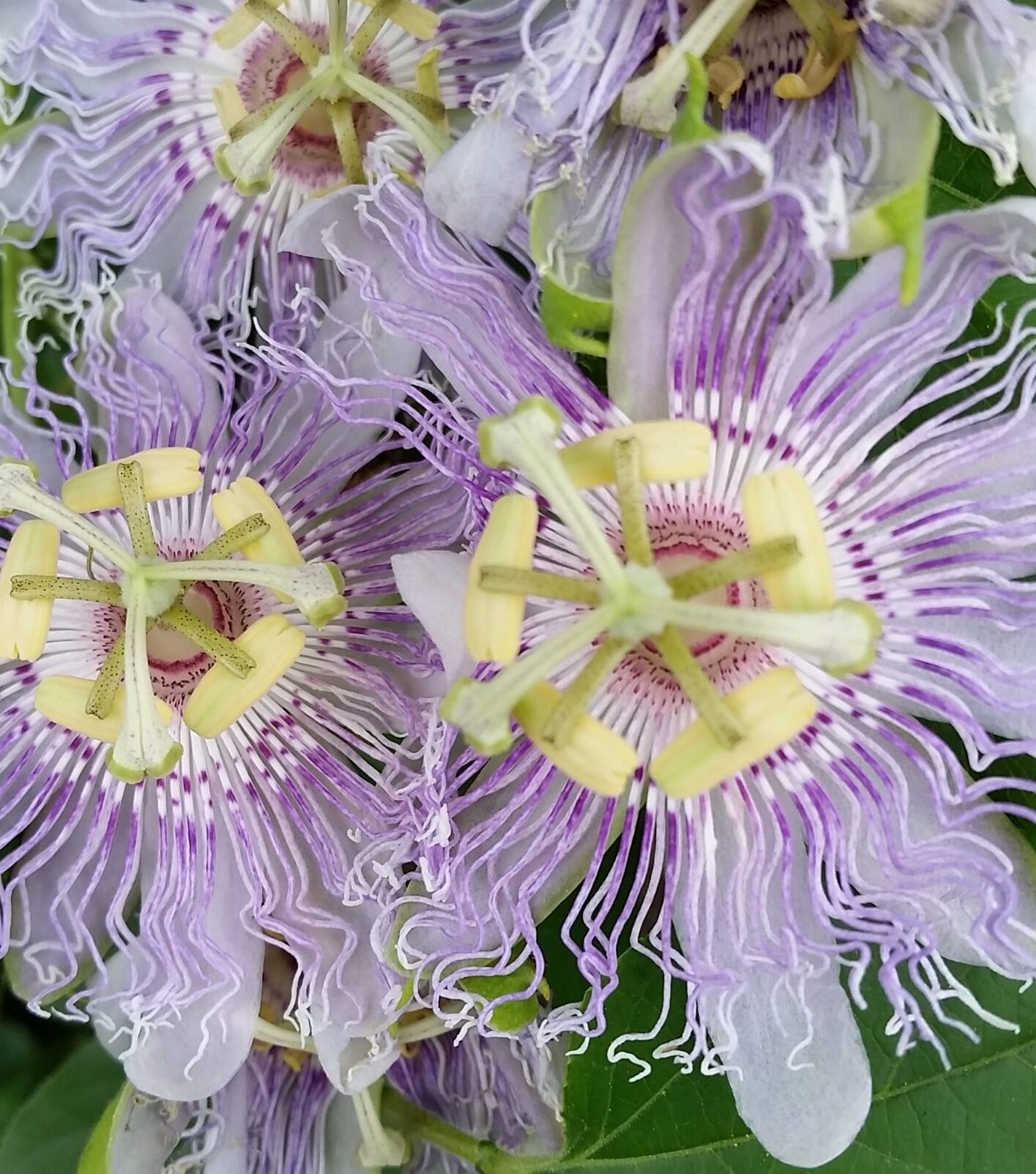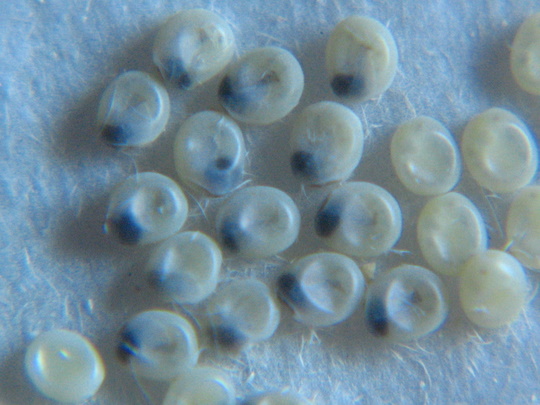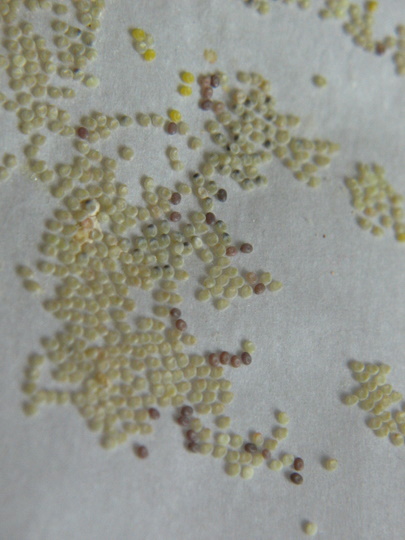My long love affair with the American passionflower, Passiflora incarnata, started when I was a little kid. When I was visiting my grandparents in Kansas, my grandpa brought me home some of these gourds that he found while out helping his farmer friend bring in the cattle. They didn’t dry well. Later, I found the stunning, bizarre purple flowers when riding my bike, and looked them up and learned about them. I picked the fruits and ate them, juiced them, and made them into jelly. The most amazing jelly I ever made was wild elderberry, with passionfruit juice substituted for the lemon. YUM.
When I was grown up and had my own house, I discovered the many, many kinds of passionflowers that were available at plant nurseries, and I’ve raised, or at least attempted, over a dozen species and varieties. Only a few stuck with me, more because of Dallas’s beastly hot summers, than for the winter cold. For a couple of years, I had a good stand of the wild type, and enjoyed both their flowers and fruit. The others that I kept going for some years were P. caerulea and P. x Constance Elliott.
When we moved to the new house, I was happy to see that it already has some small P. lutea plants – these produce a tiny green-yellow flower, but they’re cool. I wanted to install some P. incarnata, though – and they’re not a plant you usually find in the nursery, so that meant a wander with a shovel.
I have often seen them on roadsides, and it’s an easy location to visit with a shovel and a bag. They don’t get a chance to climb upward much, but they ramble sidelong like boysenberries. I had thought I saw some when I was going from Old House to New House, but it’s in an inconvenient place to stop. Today, I got my little shovel and some bags, and went visiting.
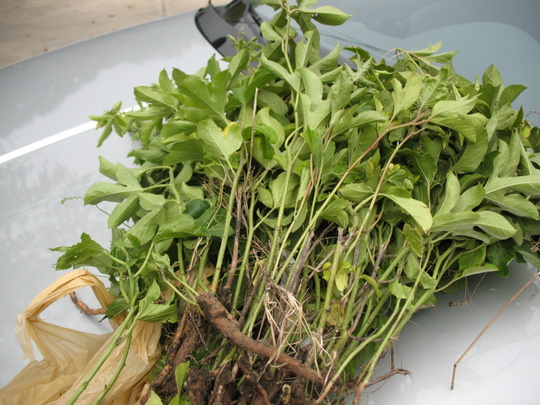
I ended up with about fifty plants, and a pound and a quarter of fruit. I could have dug thousands without even putting a dent in the huge colony – the main limit was the number I could reasonably foresee taking care of. The plants spread by underground runners, and they are designed such that the plant breaks off if pulled; by digging and then then turning them out, you get a tuber with the top growth. These almost invariably grow, and are much more reliable and faster than cuttings.
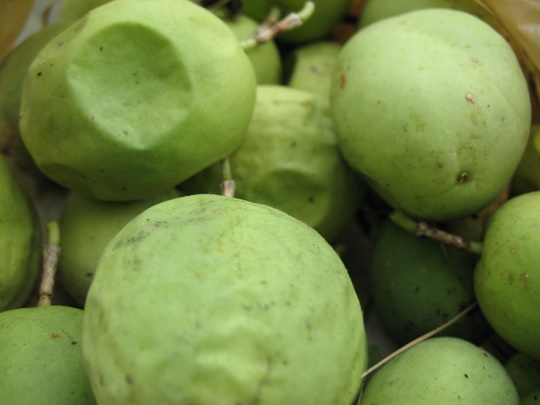
The fruit, when full-sized, are roughly the size of hen’s eggs. This batch had a lot of small fruit, I think because the hillside had been mowed and it set the plants back. They are certainly tasty, though! These should not be allowed to wrinkle as much as the tropical variety; they will rot. They drop from the vine when ripe, so instead of picking them, I would lift and gently shake sections of vine. What falls, is mine.
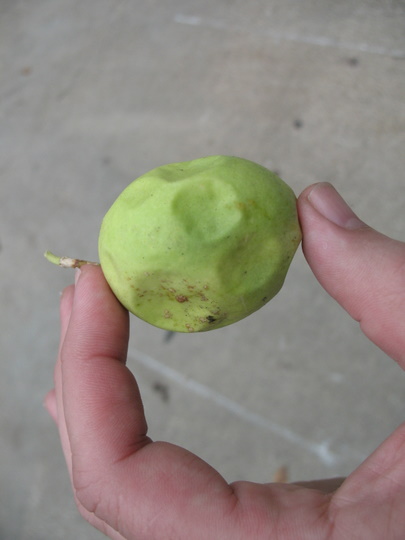
I’ve read (somewhere) that the fruit got its name from the fact that the vines would pop out of the ground in late spring. They’re a hardy herbaceious perennial, coming back from the root every year. Anyone who has harvested them, knows that the real reason for the name, is that you almost invariably tread on some of the fruit, and they make a little bang as they burst.
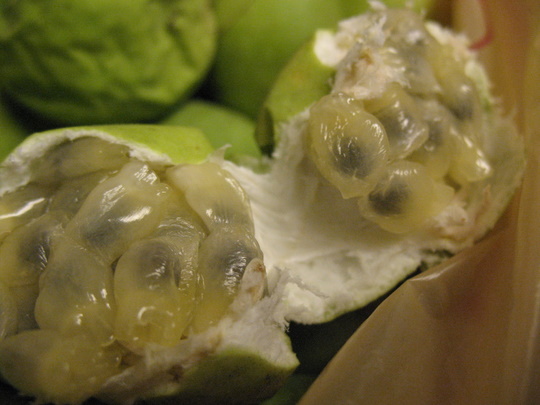
Inside, they are not quite as gooey as the tropical version. The seed capsules are quite distinct, and if you don’t press them, you can handle them almost like pomegranate. They’re DELICIOUS. To say that the flavor is tropical, with hints of pineapple and banana, is like saying that garlic is like onion with a spicy aroma. But you get the right idea.
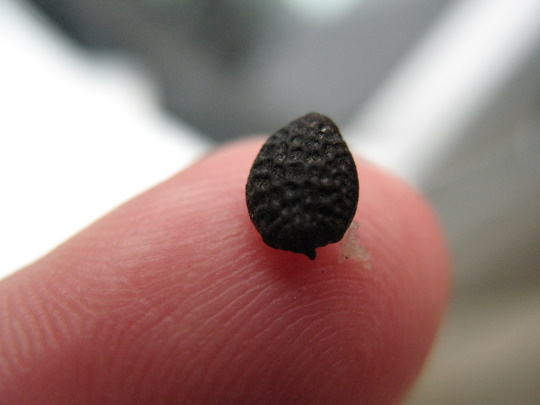
The seeds are quite hard and brown-black like iron, with little dimples. They don’t start as easily from seed as from roots, but they’re easier to share. After I got home and took pictures, I walked the neighborhood, eating the fruit and spitting the seeds on every vacant lot. Call me Johnny Passionflowerseed.
Let me know if you want some seeds – I’m going to have BUNCHES.




